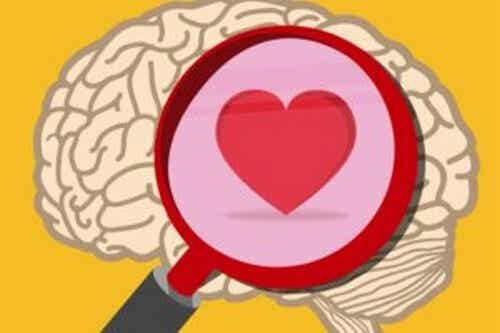Psychotherapy can be applied in almost all areas of our life: today we are talking about social intervention in the grieving process.

Written by Elena García
Last update: December 14, 2021
Many of us have experienced the loss of a loved one. While both the concept and attitudes towards death have changed significantly over the years, dealing with the death of a loved one is always difficult, especially when it is unexpected or traumatic. In this article we present social intervention in the stages of bereavement.
Sometimes we need support to overcome this situation. Because, however much you may be more or less ready to face death, there are times when you risk getting stuck. In these cases, social intervention in the stages of bereavement by qualified professionals will be fundamental.
Following the loss of someone they love, people feel great pain (Moreno, 2002). Pain is a process, a normal manifestation in the face of death.
Reactions can be physical, emotional and social in nature and can range from a temporary feeling of sadness to complete desolation which, in severe cases, it can last several years, but also for a lifetime. (Raphael, citato in Echeburúa e Corral, 2001).
Stages of mourning
Mourning is different and unique for each person, but it is also dynamic because it goes through different stages. According to psychologist Kübler Ross (1969), the stages of mourning are:
- Rejection.
- Anger.
- Negotiation.
- Depression.
- Acceptance.
These stages are the most common, but there are times when the symptoms of the grieving process take on the characteristics of pathological grieving.
This differs from mourning considered "normal" by the intensity and duration of the emotional reaction. According to Echeburúa and Corral (2001), mourning becomes pathological when:
- The intensity of the symptoms is greater.
- The reaction lasts more than a year after the loss.
- Symptoms appear that are inappropriate compared to normal pain: hallucinations, delusions, social isolation, sleep and appetite disturbances, etc.
"Pain challenges us to love once again."
-Terry Tempest Williams-
Social intervention in the stages of mourning
When we talk about social intervention in the stages of bereavement, first of all we need to know the types of bereavement, their causes and consequences.
Although life experiences can help us understand the situation faced with the loss of a loved one, this should never be a guarantee for good practice.
During the surgery, therefore, it is worthwhile to take into account two aspects: bereavement counseling and bereavement therapy.
Counseling as a social intervention in the stages of mourning
The objectives to be achieved with this level of intervention are the following (Worden, quoted in González, 2011):
- Provide adequate information on the grieving process.
- To carry out the chores of the deceased that remained unfinished.
- Increase the reality of the loss by trying to avoid or overcome denial.
- Help manage expressed and latent emotions; facilitate emotional expression.
- Overcoming the obstacles that make social reintegration difficult after loss.
- Collaborate in the resumption of a normal life.
This type of intervention should also focus on helping the family member make the loss real, identify and express their feelings, learn to live without the deceased, and integrate the loss into their personal history.
Time must be given to accept the loss, providing the family member with adequate coping strategies without forgetting the support and continuous monitoring that allow to identify any pathological behaviors.
Pain therapy
This more specialized model requires more knowledge. Pain therapy seeks to help process grief in order to avoid possible complications.
According to Worden (quoted in González, 2011), this type of therapy is based on the identification and resolution of separation conflicts that make it impossible for people whose pain does not appear, is delayed, excessive or prolonged, to perform daily tasks.
For this reason, social intervention in the stages of bereavement from this perspective is more appropriate in the following cases:
- Complicated mourning with prolonged pain manifestation.
- Bereavement manifests itself through a somatic symptom or masking.
- The loss manifests itself as an overreaction.
Conclusions
Although death is inevitable, it is sometimes very difficult to accept the pain and learn to manage the suffering it causes us.
It's hard to see the bright side of things when something like this happens, yet everything that happens to us in life teaches us some very important lessons.
As Bermejo (2005) says, mourning on the one hand claims our greatest and most beautiful truth: the value of love. On the other hand, it puts us in front of a more tragic reality: loneliness.
The death of a loved one inevitably brings us face to face with the mystery of life and reminds us that we are not eternal. He imposes silence on us, an empty silence; and emptiness inevitably pushes us to reflect.
In short, overcoming pain means having balance, it is knowing how to adapt to the circumstances of life. It is resilience and it is reflection. It is not a question of forgetting, rather of learning to live with absence.


























